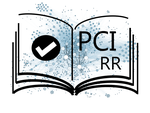

 based on reviews by Chris Chambers and 1 anonymous reviewer
based on reviews by Chris Chambers and 1 anonymous reviewer

DOI or URL of the report: https://dx.doi.org/10.31234/osf.io/pb47n
 , posted 03 Oct 2022
, posted 03 Oct 2022Dear Dr. Zhang,
Many thanks for submitting the Stage 2 report 'Is the past farther than the future? A registered replication and test of the time-expansion hypothesis based on filling rate of duration'. The stage 2 report has now been seen by the two original reviewers (i.e., the two reviewers who had also reviewed the stage 1 report).
Before the stage 2 report can be recommended in PCI-RR, one of the reviewer notes that you need to include the URL to the repository where you have archived your study data and materials.
In addition to the above, I have a few suggestions for edits:
1. In the abstract, you state 'Moreover, the filling rate of duration was significantly higher in the past than in the future, as predicted, but was negligibly (study 1) or negatively (study 2) correlated with psychological distance." I am unsure whether this is the best way to summarise the results of the correlations as shown in the results of study 1 (p. 19: 'Psychological distance was not significantly correlated with either the filling rate of duration (...) or the number of errands and events (...). However, psychological distance showed a significant correlationb with the length of errands and events (...). Therefore, our hypothesis was not fully supported.) and would suggest you describe the results of study 1 regarding the correlations in questions here in the abstract more clearly.
2. On page 21, in the very last row, where you write 'Thus, our hypothesis is not supported.' - everywhere else you wrote in the past tense, so please consider editing the 'is' here to 'was'.
3. On page 22, in the discussion (first paragraph), it says 'However, no significant correlation between psychological distance and the filling rate of duration was observed.' This is in reference to Study 1, which is obviously correct with regards to filling rate of duration as the variable, however your results were more complicated given the other variables, so it may be worthwhile to expand this part of the discussion a little and summarise the whole range of results for study 1.
4. On page 22, the last sentence says 'To the best of our knowledge, no such opposite results have been reported in any published TDE literature.'. Personally, I would suggest you delete this sentence, as it is not necessary, and - in the absence of presenting the results of a systematic review - also not really informative.
Best wishes,
Ljerka
The introduction, rationale, and hypotheses appear to be the same as for the approved Stage 1 submission, and the authors also appear to have adhered to the registered procedures. However, I could not find a way to access the tracked changes version of manuscript to confirm this.
The data appear adequate to test the authors’ hypotheses and the conclusions seem justified by the evidence. All three of the potential reasons the authors give for the discrepancy between their unexpected findings and those of Caruso et al. (2013) are well delineated.
Conclusion: The studies reported in this manuscript provide an important challenge to the existence of and potential mechanisms of the Temporal Doppler Effect described by Caruso et al. (2013). The quality of the methods is high, and the authors are appropriately circumspect in the discussion. I recommend the manuscript be published.
 , 22 Sep 2022
, 22 Sep 2022I greatly enjoyed reading this completed Stage 2 Registered Report. The authors have conducted the study faithfully according to the approved protocol; the results are reported clearly and transparently; and the Discussion is thoughtful and well considered. On a purely subjective level, I also find the results thought provoking -- going strongly against the original predictions in several ways -- and while this is not part of the Stage 2 evaluation, I think these findings could have a significant impact in contextualising and challenging previous conclusions. Overall, I judge that the manuscript fully meets the Stage 2 review criteria.
There is one very minor revision I would like to see prior to full acceptance. In accordance with the PCI RR TOP policy, the authors have publicly archived their study data and digital materials on the OSF (https://osf.io/x29k7/) but the URL to the repository does not appear to be stated in the Stage 2 manuscript.